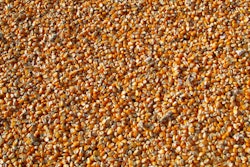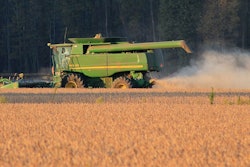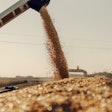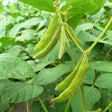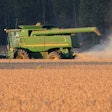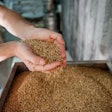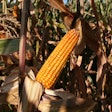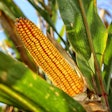
Northern colder climates present unique challenges for agriculture, but they also offer an array of opportunities for the cultivation of cold-hardy crops.
In these regions, where frigid temperatures and short growing seasons are the norm, certain cereals and oilseeds can thrive. These hardy crops not only serve as essential components of human diets, but they can also play a vital role in livestock and poultry feed production.
Let's explore four cereals and four oilseeds grown in northern colder climates that can serve as valuable feed ingredients. This is becoming more significant as local producers are looking into issues such as sustainability, sourcing and economics when it comes to imported raw materials.
Four cereals of importance in colder climates
- Barley (Hordeum vulgare). Barley is a hardy cereal crop that thrives in colder climates. It has a short growing season, making it suitable for regions with limited warmth. Barley's high fiber content and moderate protein levels make it an excellent choice for animal feed. It is commonly used in cattle, swine, and poultry diets (in this order of diminishing preference), providing energy and essential nutrients while improving gut motility due to the fiber content. In short, barley's cold tolerance and adaptability to various soil types make it, perhaps, the most valuable cereal ingredient in colder regions.
- Oats (Avena sativa). Oats are another cereal well-suited to northern climates. They have the advantage of being among the earliest spring-seeded crops, allowing farmers to take advantage of the limited growing season. Oats are rich in carbohydrates, providing energy for livestock. They are particularly favored for equine diets, as they are less likely to cause digestive issues. Additionally, oats contain a good level of protein and valuable fiber, making them a versatile feed ingredient for various livestock species. Whole oats are not recommended for all classes of swine, and certainly not for poultry.
- Rye (Secale cereale). Rye is a cool-season cereal that can thrive in even colder climates with shorter growing seasons. Although it is less commonly used than barley and oats, rye offers unique advantages as a feed ingredient. It is highly drought-tolerant and can grow in marginal soils. Rye's moderate protein content and excellent fiber quality make it valuable in ruminant diets, such as for cattle and sheep. It can also serve as a cover crop, providing both forage and soil erosion control benefits. Rye hybrids (with less anti-nutritional factors) are becoming common for feeding to swine (primarily) and poultry (to a lesser extend).
- Wheat (小麦属植物spp)。.Wheat is a staple crop worldwide, and certain cold-tolerant varieties are well-suited to northern climates. While it is primarily grown for human consumption, wheat bran, a byproduct of milling, is almost invariably used as animal feed. Wheat bran is a source of dietary fiber and can be incorporated into livestock diets to improve gut motility, while provide essential nutrients. Its primary and best use is as a source of effective fiber in ruminant feeds as modern swine and poultry genetics cannot easily tolerate for bulky and less energy-dense feeds.
Four oilseed crops of importance in colder climates
- Rapeseed meal or canola (Brassica napus). Canola is a type of rapeseed but both are valuable oilseed crop in colder climates. Rapeseed is known for its high oil content, making it also an excellent source of energy for livestock. Rapeseed oil, however, is used more for human consumption and biodiesel blending. Rapeseed meal, a byproduct of oil extraction, is a protein-rich feed ingredient commonly used in poultry and swine diets. It contains a well-balanced amino acid profile and is highly digestible, promoting animal growth and health. It does contain several anti-nutritional factors, and here is where canola appears to excel in comparison.
- Flaxseed (Linum usitatissimum). Flaxseed, also known as linseed, is a cold-tolerant oilseed crop rich in omega-3 fatty acids and fiber. While it is primarily grown for its oil content, flaxseed meal, a byproduct, is a valuable feed ingredient. Flaxseed meal is often included in poultry and ruminant diets to improve the nutritional profile of the feed. Its omega-3 fatty acids can enhance the quality of animal products, such as eggs and meat. In older times, oilseed meal referred to linseed meal and certain digestive enhancing properties were attributed to it. This has been lost today but it is worth exploring now that antibiotics are no longer part of everyday animal nutrition programs.
- Sunflower(Helianthus annuus). Sunflower is another oilseed crop that can thrive in northern colder climates. Sunflower meal, obtained after oil extraction, is a protein-rich feed ingredient suitable for various livestock species. It is especially valuable in dairy cattle diets due to its high protein content and favorable amino acid composition. Sunflower meal provides essential nutrients and energy for livestock while promoting milk production. It contains virtually zero anti-nutritional factors unless all hulls are added back to the protein meal. It also contains a small amount of sucrose making it a palatable ingredient.
- Safflower (Carthamus tinctorius). Safflower is a lesser-known oilseed crop that can adapt to colder climates with proper management. Safflower meal, a byproduct of oil extraction, is a source of protein and some energy in animal feed (it depends on the extraction method). It can be used in poultry and swine diets, contributing to the growth and well-being of these animals. Safflower meal's versatility in feed formulations as a partial protein source makes it a valuable resource in colder regions.
In northern colder climates, arable crop farmers face unique challenges when it comes to crop cultivation. The four cereals and four oilseeds discussed here, however, have proven to be resilient and productive options for both human and animal consumption.
These crops not only withstand the harsh conditions of colder regions but also provide essential nutrients, energy, and protein for livestock and poultry, supporting the sustainability of agriculture in these challenging environments. Until now, these ingredients had limited acceptance by the animal nutrition industry, even in the same cold regions. As times change and new norms become reality, however, revisiting these old crops is worth considering.





